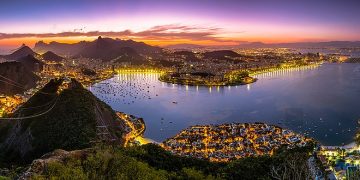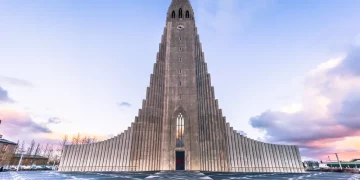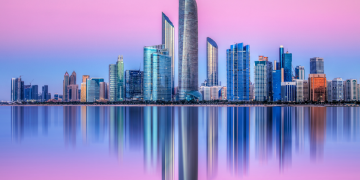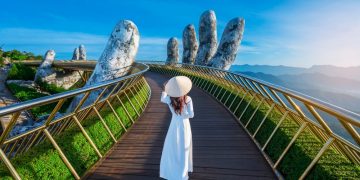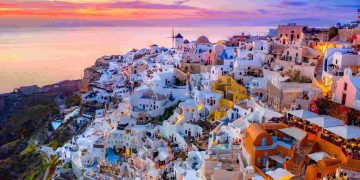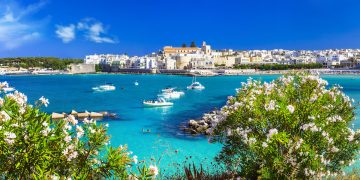Introduction
Yellowstone National Park, the first national park in the world, is a natural wonder that captures the imagination of millions of visitors each year. Spanning over 2.2 million acres and featuring dramatic landscapes, geothermal wonders, abundant wildlife, and a rich cultural history, Yellowstone is an iconic destination that offers something for every traveler. However, with its vast size and countless attractions, planning a trip to Yellowstone can be both exciting and overwhelming.
This comprehensive travel guide will help you navigate the park’s diverse offerings, from choosing the best time to visit and exploring must-see landmarks to uncovering hidden gems and practical tips for making your adventure seamless and unforgettable.
1. Why Visit Yellowstone National Park?
Yellowstone’s appeal lies in its remarkable diversity of attractions:
- Geothermal Features: Home to over half of the world’s geysers and countless hot springs, mud pots, and fumaroles, Yellowstone showcases the dynamic power of Earth’s geothermal energy.
- Stunning Landscapes: From lush valleys and vast meadows to dramatic canyons and pristine lakes, Yellowstone’s scenery is unparalleled.
- Wildlife: The park is a haven for animal lovers, offering the chance to spot bison, elk, bears, wolves, and more in their natural habitats.
- Cultural Significance: Yellowstone’s history, from its Indigenous roots to its role in the global conservation movement, adds depth to any visit.
2. When Is the Best Time to Visit Yellowstone?
Each season offers a unique perspective on the park:
- Spring (April to June): Ideal for seeing wildlife emerge after winter, spring features blooming wildflowers, roaring waterfalls, and fewer crowds.
- Summer (July to August): The busiest time of year, summer offers warm weather and access to all roads and trails. However, expect larger crowds and higher prices.
- Fall (September to October): With cooler temperatures and vibrant foliage, fall is a tranquil time to visit. Wildlife is also active during this season.
- Winter (November to March): Yellowstone transforms into a snowy wonderland, perfect for cross-country skiing, snowshoeing, and unique wildlife sightings.
3. How to Get to Yellowstone National Park?
By Air
- Jackson Hole Airport (JAC): Closest to the park’s southern entrance.
- Bozeman Yellowstone International Airport (BZN): Convenient for the northern and western entrances.
- Yellowstone Regional Airport (COD): Near the eastern entrance.
By Car
Yellowstone is accessible via five entrances:
- North Entrance: Near Gardiner, Montana, open year-round.
- West Entrance: Near West Yellowstone, Montana, popular for easy access to major attractions.
- South Entrance: Connects to Grand Teton National Park.
- East Entrance: Near Cody, Wyoming, offering scenic drives.
- Northeast Entrance: Leads to the Lamar Valley, great for wildlife enthusiasts.
4. Where to Stay in Yellowstone?
Inside the Park
Staying inside Yellowstone allows for easy access to attractions:
- Old Faithful Inn: A historic lodge near the park’s famous geyser.
- Canyon Lodge: Close to the Grand Canyon of the Yellowstone.
- Lake Yellowstone Hotel: Offers scenic views of Yellowstone Lake.
Outside the Park
Gateway towns provide additional lodging options:
- West Yellowstone: A bustling town with hotels, restaurants, and tour operators.
- Gardiner: Ideal for visiting Mammoth Hot Springs and the northern entrance.
- Cody: Known for its Wild West charm and proximity to the eastern entrance.
Camping
Yellowstone has 12 campgrounds, with some requiring reservations. Backcountry camping is also available for those seeking solitude.

5. What Are the Must-See Attractions in Yellowstone?
Old Faithful and Upper Geyser Basin
No trip to Yellowstone is complete without witnessing Old Faithful’s iconic eruptions. The surrounding Upper Geyser Basin contains numerous other geysers and hot springs, including Castle Geyser and Morning Glory Pool.
Grand Prismatic Spring
This massive, colorful hot spring is a visual masterpiece. Walk the boardwalk or hike the Fairy Falls Trail for an aerial view.
Yellowstone Lake
The largest alpine lake in North America, Yellowstone Lake offers opportunities for boating, fishing, and picnicking.
The Grand Canyon of the Yellowstone
Marvel at the dramatic canyon walls and two majestic waterfalls: Lower Falls and Upper Falls. Artist Point is a must-visit viewpoint.
Lamar Valley
Known for its abundant wildlife, Lamar Valley is the best place to spot bison, wolves, and grizzly bears.
Mammoth Hot Springs
The limestone terraces of Mammoth Hot Springs are a unique geological feature, constantly changing in appearance due to thermal activity.
6. What Activities Can You Enjoy in Yellowstone?
Hiking
With over 900 miles of trails, Yellowstone offers options for all skill levels. Popular hikes include:
- Mystic Falls Trail: A moderate hike with stunning views of a waterfall.
- Mount Washburn Trail: Panoramic vistas await at the summit.
- Fairy Falls Trail: Leads to one of Yellowstone’s tallest waterfalls.
Wildlife Watching
Early mornings and evenings are prime times for spotting animals. Remember to bring binoculars and maintain a safe distance.
Photography
From sunrise over Yellowstone Lake to the vibrant colors of Grand Prismatic Spring, photographers will find endless inspiration.
Ranger-Led Programs
Participate in guided hikes, talks, and evening programs to deepen your understanding of the park.
7. What Should You Know About Park Regulations and Safety?
Wildlife Safety
- Stay at least 100 yards from bears and wolves and 25 yards from other animals.
- Never feed wildlife, as it disrupts their natural behaviors.
Geothermal Areas
- Stay on boardwalks and trails to avoid injury or damaging fragile formations.
Leave No Trace
- Pack out all trash and follow Leave No Trace principles to protect the environment.
Weather Preparedness
- Yellowstone’s weather can change rapidly, so always carry extra layers and rain gear.
8. Hidden Gems and Off-the-Beaten-Path Experiences
- Bechler Region: Known as “Cascade Corner,” this area is home to numerous waterfalls and offers solitude away from the crowds.
- Blacktail Plateau Drive: A scenic drive with excellent wildlife-viewing opportunities.
- Yellowstone River Picnic Area Trail: A quieter trail with stunning views of the river and canyon.
Conclusion
A trip to Yellowstone National Park is more than just a vacation—it’s an exploration of one of the most remarkable places on Earth. From its geothermal wonders and abundant wildlife to its rich history and natural beauty, Yellowstone offers experiences that leave a lasting impression.
So, how can you plan the ultimate trip to Yellowstone? With careful preparation, an adventurous spirit, and a deep appreciation for nature, your journey to this iconic destination will undoubtedly be one to remember.



